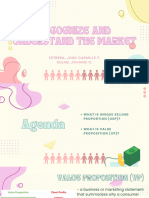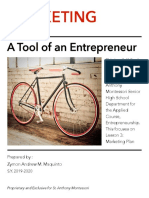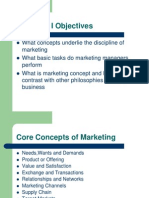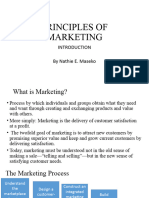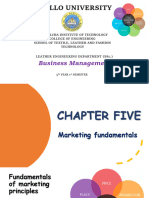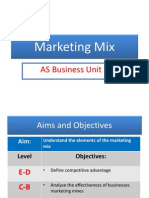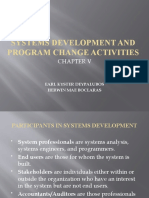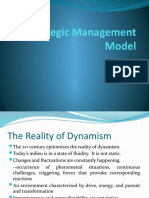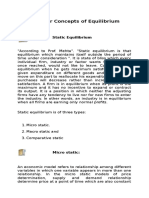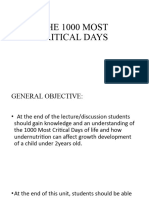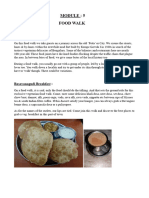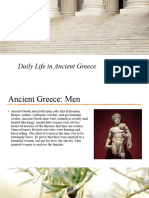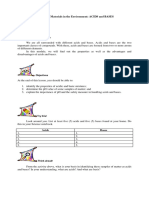0% found this document useful (0 votes)
69 views67 pagesObjectives: - Describe The Unique Selling Proposition
The document outlines objectives for developing a business plan including defining unique selling and value propositions, identifying target customers and market size, validating customer needs through research, and describing the marketing mix of 7Ps in relation to the business opportunity. It provides information on determining a USP and UVP, identifying target markets and customer requirements, and the key elements of the marketing mix for developing a new business.
Uploaded by
Herwin Mae BoclarasCopyright
© © All Rights Reserved
We take content rights seriously. If you suspect this is your content, claim it here.
Available Formats
Download as PPTX, PDF, TXT or read online on Scribd
0% found this document useful (0 votes)
69 views67 pagesObjectives: - Describe The Unique Selling Proposition
The document outlines objectives for developing a business plan including defining unique selling and value propositions, identifying target customers and market size, validating customer needs through research, and describing the marketing mix of 7Ps in relation to the business opportunity. It provides information on determining a USP and UVP, identifying target markets and customer requirements, and the key elements of the marketing mix for developing a new business.
Uploaded by
Herwin Mae BoclarasCopyright
© © All Rights Reserved
We take content rights seriously. If you suspect this is your content, claim it here.
Available Formats
Download as PPTX, PDF, TXT or read online on Scribd
/ 67

